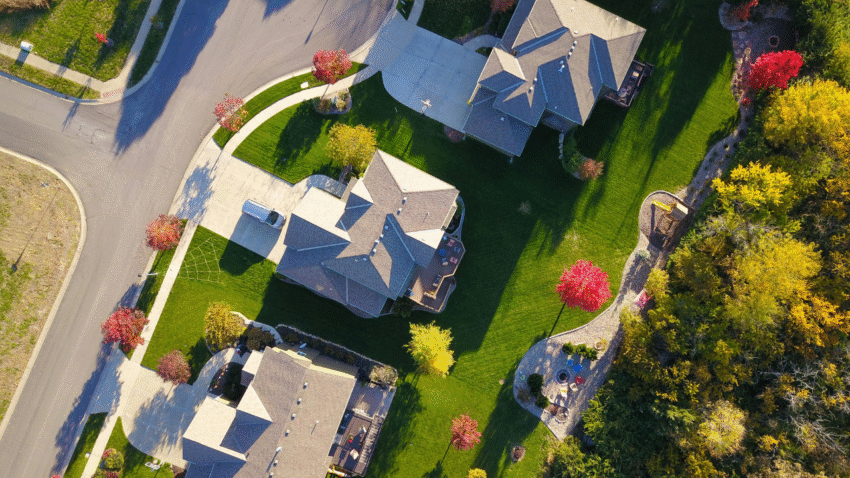Introduction
The edges of a driveway are often the first areas to show signs of damage. Whether caused by heavy vehicles, water runoff, or encroaching grass and soil, a crumbling driveway edge can make your entire driveway look neglected. Worse, if left untreated, the damage can spread across the surface and lead to costly repairs. In this guide, you’ll learn exactly how to fix a crumbling driveway edge and prevent it from breaking down again.
Why Fixing Driveway Edges Matters
Crumbling edges are more than just an eyesore. Addressing the problem early offers several benefits:
- Prevents further damage: Once edges start breaking, cracks and potholes often spread into the main surface.
- Improves safety: Loose chunks create tripping hazards and can damage vehicle tires.
- Boosts curb appeal: A clean, finished edge enhances the overall look of your property.
- Extends lifespan: Reinforcing edges helps the driveway withstand pressure and weathering.
Whether your driveway is asphalt or concrete, repairing the edges will protect your investment and keep it looking polished.
Step-by-Step Guide to Fixing a Crumbling Driveway Edge
Step 1: Inspect the Damage
- Walk the length of your driveway and check for crumbling areas, exposed aggregate, or chunks missing along the edge.
- Identify whether damage is surface-level (small chips, shallow cracks) or structural (deep crumbling, missing chunks several inches wide).
- Note whether poor drainage or heavy traffic patterns are contributing to the damage.
Step 2: Gather Tools and Materials
You’ll need:
- Stiff broom and leaf blower
- Cold patch asphalt (for asphalt driveways) or concrete patch mix (for concrete driveways)
- Trowel, putty knife, or asphalt tamper
- Shovel and spade
- Wooden form boards (for concrete repairs)
- Sealant or resurfacing compound
- Gravel or crushed stone for reinforcement
- Protective gloves, safety glasses, and work boots
Step 3: Clean and Prepare the Area
- Remove loose debris, dirt, and broken pieces from the crumbling edge.
- Use a broom and leaf blower to clear dust and grit.
- For concrete edges, pressure wash to ensure a clean bonding surface.
- Dig away any grass, soil, or plants that may be pushing into the edge.
Step 4: Create a Solid Base
- Excavate a trench along the damaged edge about 4–6 inches deep.
- Fill with compacted gravel or crushed stone.
- This provides a strong base that prevents future erosion and supports the patch material.
Step 5: Repair Asphalt Driveway Edges
- Apply cold patch asphalt into the damaged section.
- Spread evenly with a trowel, building up the edge to match the driveway height.
- Compact firmly with a tamper to remove air pockets.
- Feather the repair so it blends smoothly with the existing asphalt.
Step 6: Repair Concrete Driveway Edges
- Set wooden forms along the edge to shape the repair.
- Mix and pour concrete patch or resurfacer into the forms.
- Use a trowel to smooth the surface and match the driveway finish.
- Allow to cure for at least 24–48 hours before removing the forms.
Step 7: Seal the Repair
- Once the patch has fully cured, apply asphalt sealer (for asphalt) or penetrating concrete sealer (for concrete).
- This protects against water infiltration, which is a leading cause of edge crumbling.
Step 8: Reinforce with Edging (Optional but Recommended)
- Install edging materials such as bricks, cobblestones, steel edging, or pavers along the driveway sides.
- These barriers prevent vehicles from breaking down edges and stop soil erosion from weakening the base.
Common Mistakes to Avoid
- Mistake 1: Ignoring the Base
Filling in edges without fixing the base leads to repeat crumbling.
Solution: Always add compacted gravel before patching. - Mistake 2: Using the Wrong Repair Material
Household cement or dirt won’t hold up under traffic.
Solution: Use cold patch asphalt for asphalt driveways and proper concrete patch mix for concrete. - Mistake 3: Not Compacting Repairs
Uncompacted patches crumble quickly under pressure.
Solution: Always tamp asphalt patches and smooth concrete thoroughly. - Mistake 4: Skipping Sealing
Unsealed repairs allow water infiltration, undoing the work.
Solution: Seal after curing to extend the repair’s life. - Mistake 5: Parking on Edges
Regularly driving or parking on edges accelerates damage.
Solution: Reinforce edges and park centrally on the driveway.
Extra Driveway Tips & Hacks
- Drainage Fix: Install small trenches or gravel borders to redirect water away from driveway edges.
- Seasonal Care: Inspect edges each spring and fall to catch early signs of damage.
- Landscaping Support: Plant grass or ground cover near edges to help stabilize soil and prevent erosion.
- Protective Borders: Add decorative stone or brick edging to enhance aesthetics and protect from vehicle pressure.
For further care, check out our guide on how to repair uneven pathway sections, which covers similar structural stabilization tips.
Conclusion
A crumbling driveway edge may start small, but if left unrepaired, it can spread across your entire driveway. By cleaning thoroughly, reinforcing the base, using proper patch materials, and sealing for protection, you can restore both the function and appearance of your driveway. Adding edging or borders provides long-term protection and boosts curb appeal.
Pro Tip: Don’t wait until large chunks break off—early repairs are quicker, cheaper, and last longer. A strong, reinforced edge keeps your driveway safe, stable, and attractive for years to come.
